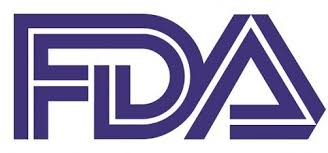Chemycal has been acquired by 3E
Learn MoreChemycal has been acquired by 3E
Learn MoreDiscover how Chemycal PRO helps you boosting your regulatory monitoring:

Enabling patients and providers to have efficient access to new and innovative medical products that meet the FDA’s gold standard for safety and effectiveness is a core part of our mission. We’re advancing these goals as part of the Medical Innovation Access Plan that I announced earlier this year. While we’ve unveiled parts of that plan already, we’ll be releasing its full detail shortly. As one part of that effort, we’re announcing some additional steps we’re taking right now to promote beneficial medical device innovation.
Medical device technology evolves quickly. The process for improving the performance and clinical characteristics of medical devices is highly iterative. Often it’s the case that small modifications help provide incremental but meaningful improvements to products. Over time, these cumulative advances are consolidated into more noticeable advances in the performances of different technologies. Therefore it’s important for the FDA to enable innovators to have the flexibility to efficiently make these kinds of small modifications. At the same time, the FDA needs to establish modern tools and benchmarks for measuring the safety and performance of devices to make sure they’re delivering the expected benefits to patients.
Today we’re taking several new steps toward each of these goals.
First, we’ve completed our first qualification of a medical device development tool (MDDT) to provide a more objective platform for developing devices in a key area of medicine – cardiovascular health. Fostering the creation and validation of development tools that can be used to provide more efficient and accurate ways to measure risk and benefit, as part of the medical product development process, is a key goal of the FDA. At the FDA, we’re undertaking a comprehensive policy effort to facilitate the development and validation of these kinds of medical device development tools.
Today’s newly qualified MDDT is a 23-item questionnaire that measures health information that is reported directly by patients with heart failure. The tool can be used to measure a heart failure patient’s health status, including clinical symptoms and the physical and social limitations caused by this condition. Such a tool has the potential to help engineers designing heart failure devices to more efficiently and accurately quantify how much their device could actually improve a patient’s quality of life. By qualifying the tool under the FDA’s new, voluntary program, it will make it easier for product developers to rely on the outputs of this newly qualified tool as part of their development plans. Innovators can trust in advance that the agency has already found the outputs of these measures to be reliable.
We expect to evaluate and qualify more medical device development tools in the coming months, and we encourage this kind of product development. One area in which there may be an opportunity is wearable technologies. These tools have the potential to provide fundamentally better ways of measuring clinical outcomes, like how a device or even a drug affects outcomes that relate to physical performance or the function and output of different organ systems. The development of more modern tools for measuring outcomes relevant to regulatory decisions is a key part of our efforts to promote innovation. Such development tools can also help minimize the use of animal studies, reduce the duration of testing, or require fewer patients in a study by optimizing patient selection or improving on the ability to measure benefit and risk through the availability of measurements that are more sensitive for assessing these outcomes. Today, FDA experts from the agency’s Center for Devices and Radiological Health issued a blog on this important program.
CONTINUE READING ON www.fda.gov
2013 © MyChemicalMonitoring. ALL Rights Reserved. About Us | Terms and Conditions